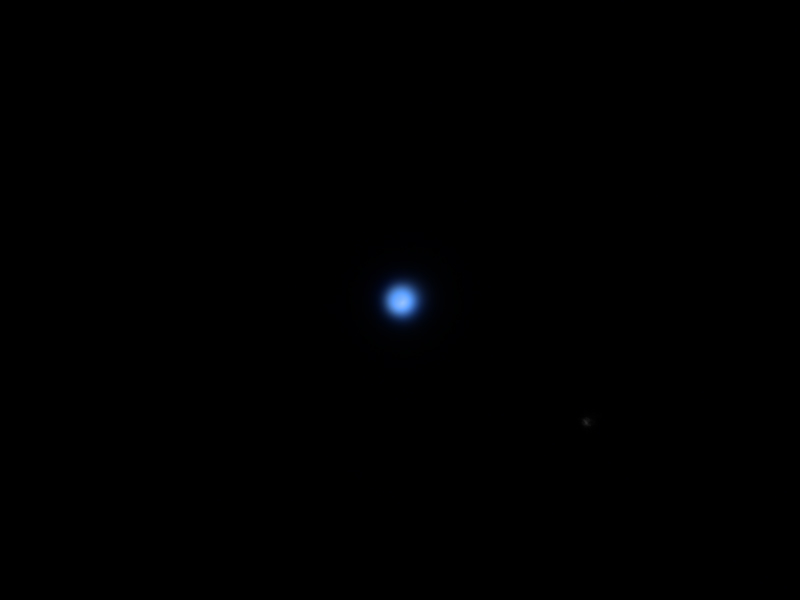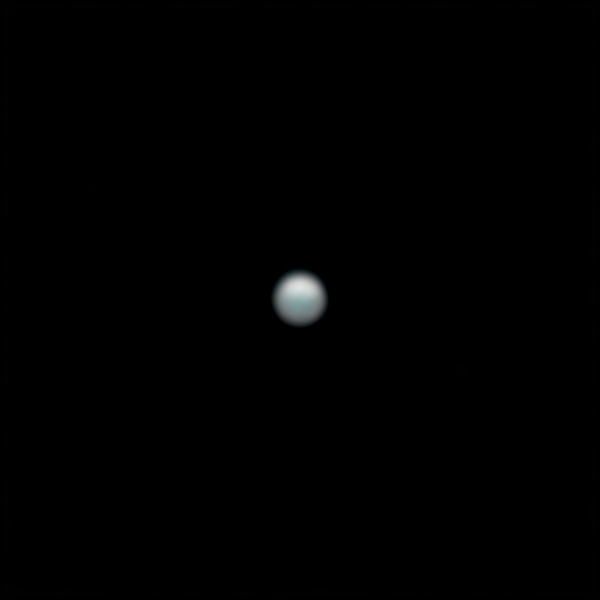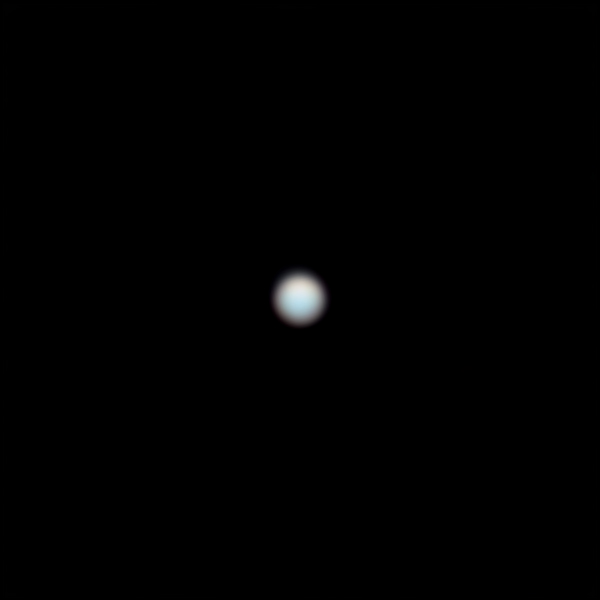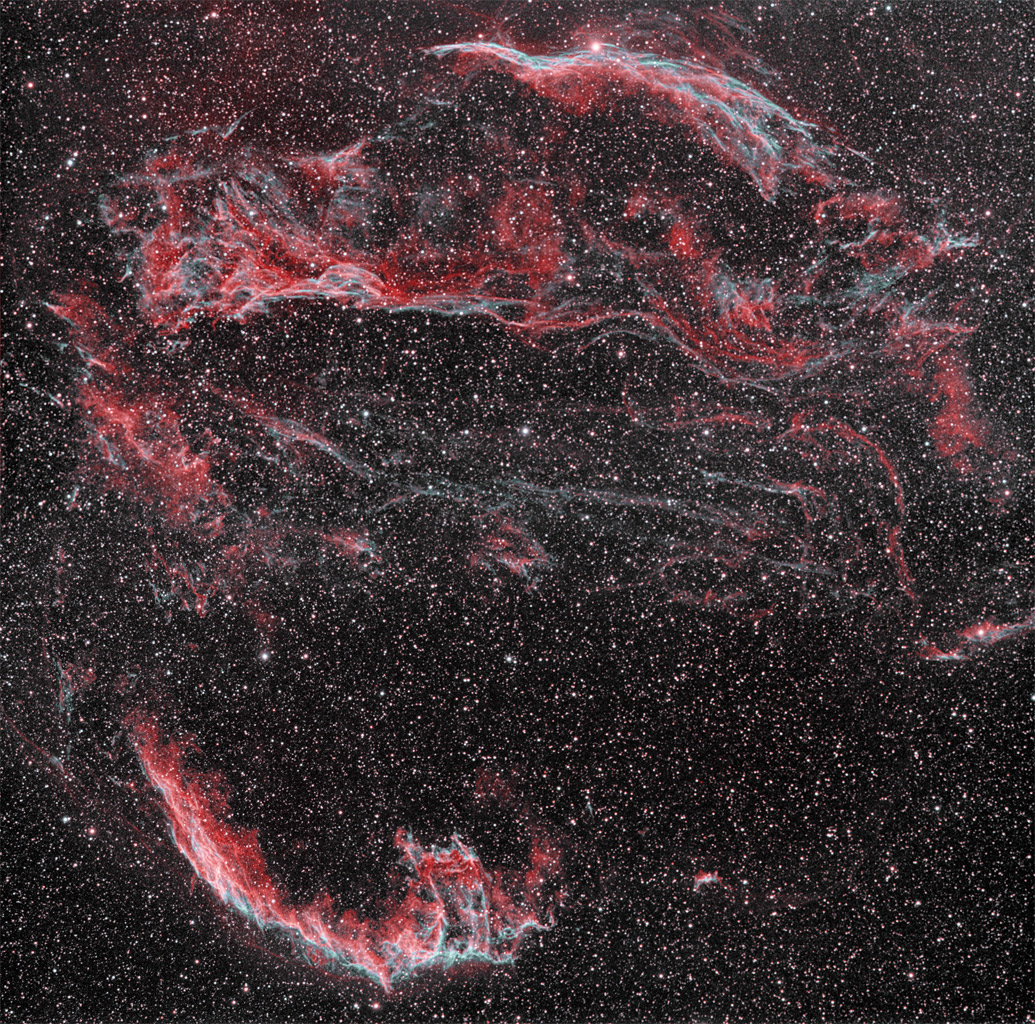Here's a shot of neptune on the same night i shot uranus, using the same processing techniques.
Definitely a bit of a stretch, but with a little imagination you can see a subtle dark section in the center and a white patch just below and to the right:
 |
| Neptune 10/27/2018 06:17 UTC IR-RGB |
I'd say the white patch is more convincing, but can't call either more than wishful thinking/artifact at this point. If nothing else, it's a nice shade of blue ;)
Imaging details:
camera ZWO ASI 290MM with ZWO RGB filters
Baader IR pass 685 nm
celestron 11" Edge HD
East Bluff, CA
10/27/18 06:17 UTC
120 second captures, 2x each filter (3 for IR)
gain 456 , exposure ~51 ms red, 19 ms green, 23 ms blue, 100 ms IR 685 <30% histogram
upsampled x2 in autostakkert, derotated in winjupos.
color balance on triton
composite image to bring in triton (present even on short exposures, but faint)
Imaging details:
camera ZWO ASI 290MM with ZWO RGB filters
Baader IR pass 685 nm
celestron 11" Edge HD
East Bluff, CA
10/27/18 06:17 UTC
120 second captures, 2x each filter (3 for IR)
gain 456 , exposure ~51 ms red, 19 ms green, 23 ms blue, 100 ms IR 685 <30% histogram
upsampled x2 in autostakkert, derotated in winjupos.
color balance on triton
composite image to bring in triton (present even on short exposures, but faint)









